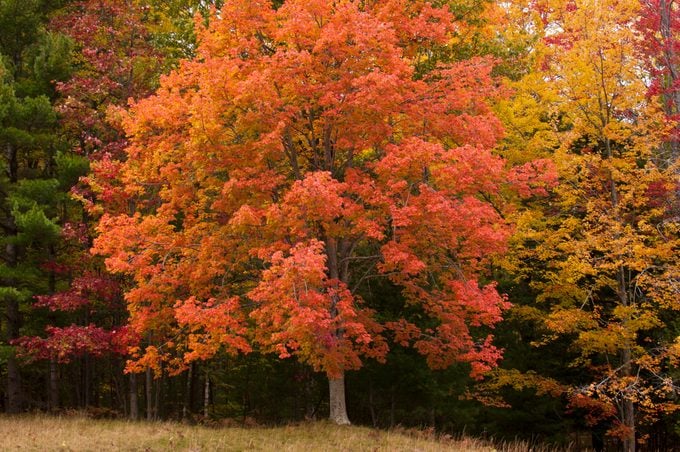From how tall maple trees can grow to the surprisingly cold temperatures they can withstand, you'll love learning these fun maple tree facts.

7 Fascinating Maple Tree Facts You Should Know

On This Page
An Invasive Maple Came to the U.S. Centuries Ago

Norway maple, classified as highly invasive in the United States, was first imported from Europe and Asia in 1756 as an ornamental landscaping tree.
Is an Amur maple shrub invasive?
It Takes Lots of Sap to Make Maple Syrup

It takes about 40 gallons of sap to make 1 gallon of syrup. Sugar maples are the biggest sap producers, so they are favored by maple sugar makers. Depending on the soil, climate and its genetics, a maple tree needs to be about 10 inches in diameter before it will produce enough sap to make syrup.
Psst—here’s why you need an oak tree in your backyard.
Maple Trees Grow Taller Than You Think

Some sugar maple trees can grow up to 150 feet tall! Most, according to the New England Forestry Foundation, reach heights of between 80 and 100 feet.
Check out the top 10 fast-growing trees you can add to your yard.
There Are Many Maple Species in the World

There are 132 species of maple trees in the world, mostly native to Asia. In North America, you’ll find 13 native species of maple trees. Red maples are the most widespread, and silver maples are a common choice for planting, too.
Maple Trees Can Live Hundreds of Years

Long-lived hardwoods, some maple trees in North America are over 300 years old. Red maples, however, have an average lifespan of 80 to 100 years, while certain silver maple trees can live to be 130.
Psst—avoid these trees you should never grow in your yard.
Maple Trees Are Widespread

Maple trees have the longest continuous range of any tree in North America, spanning 1,900 miles up the East Coast. They can grow at elevations from sea level up to 3,000 feet.
Red Maples Can Withstand Extreme Cold

Red maples tolerate the widest range of climatic conditions of any maple. They can tolerate temperatures down to -40 degrees Fahrenheit. This makes the maple leaf a perfect choice for the Canadian flag—and Canada is the only country to feature the maple leaf on its flag.
Done reading maple tree facts? Next, learn fascinating facts about conifer trees.
Sources
- New England Forestry Foundation, “Meet the Sugar Maple“
- Nashville Tree Conservation Corps, “How Many Kinds of Maple Trees Are There?“
- National Wildlife Federation, “Red Maple“
- Forestwildlife.org
- USDA.gov, “Red Maple“


